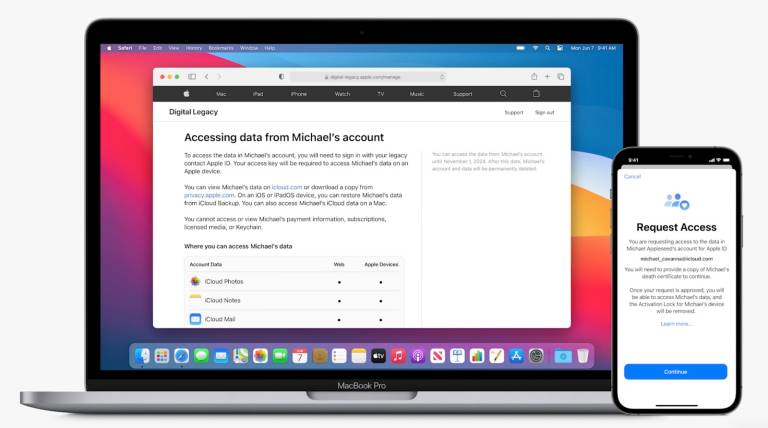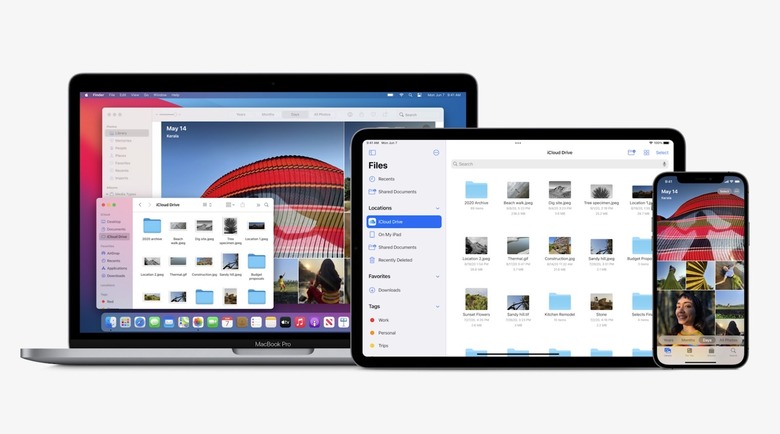iOS 15 Adds An iPhone Feature You Might Never Use - But You Should Set It Up Anyway
If 2020 taught us anything, it was that our lives could be turned upside down without warning. In the harshest months of the pandemic, we learned that one has to be prepared for the unpredictable. You have to think a few steps ahead and assess all possible scenarios, even the less favorable ones. Like many others, I often found myself thinking about the best ways to pass down my digital information to loved ones if the situation ever called for it.
Were something to happen to me, I wanted to ensure they had access to all of my devices, online accounts, and recent backups. Sharing passwords to devices alone wouldn't be enough. What if the iPhone is lost in the process? I would also risk having that sensitive data exposed to hacks if it were stored online. I had also written out a sort of will, a set of instructions peppered with thoughts, so my family knew where and how to begin untangling the massive number of online profiles that would need to be dealt with.
Apple knows that some of us want to safeguard all the digital information that we want to have passed down to our loved ones after we're gone. And so, Apple created a new Digital Legacy feature that will be available on iPhone and Mac in the very near future.
Digital Legacy is a feature you'll rarely have to use, but it's a good idea to set up as soon as possible on iPhone or Mac once Apple rolls out its newest iCloud features. Digital Legacy will let an iCloud user designate a contact who could be granted access to their iCloud account after the user dies.

iCloud Digital Legacy: Selecting a Legacy Contact on iPhone.
The functionality isn't enabled on iPhone or Mac right now, but Apple's VP of Apple Cloud Services Mike Abbott showed it on stage during Apple's iCloud segment at WWDC 2021 on Monday. Users will be able to add a Legacy Contact in iCloud, as seen above.
That chosen Legacy Contact will then be able to request access from Apple to the iCloud account of the person who just passed away. There's no way to test the iCloud functionality right now, but Apple shared images that explain how it will work.

iCloud Digital Legacy: What accessing the data of a deceased user means.
The Legacy Contact will need to provide a copy of the death certificate to access the iCloud information. Apple explains that once the request has been approved, access to the iCloud data will be given, and the Activation Lock for the user's device will be removed.
The information displayed on the Mac in the image above indicates the Legacy Contact will have a limited time to act — in this example, they'd have to access the data in the iCloud account by November 1st, 2024. After that, the account and data will be permanently deleted.
The example above also explains what sort of data will be available to the Legacy Contact:
You can view Michael's data on icloud.com or download a copy from privacy.apple.com. On an iOS or iPadOS device, you can restore Michael's data from iCloud Backup. You can also access Michael's iCloud data on a Mac.
You cannot access or view Michael's payment information, subscriptions, licensed media, or Keychain.
Apple offers a URL where the Digital Legacy process information might be available to users: https://digital-legacy.apple.com/manage. The page prompts the user to log in to their iCloud account, but once that done, an error page returns. The feature isn't yet available for anyone to try out. Still, the feature is something all iPhone users should consider enabling when it's available.

Adding an iCloud Recovery Contact on iPhone.
Apple also announced another handy security iCloud feature during the WWDC event that relies on having another person involved in the iCloud security process. Account Recovery now supports a new way to recover an Apple ID password or device passcode. You'll be able to add family and friends as Recovery Contacts in iCloud and then call them when you need Recovery Codes to get into your account or device. The Recovery Contacts will never have access to the actual iCloud account.
